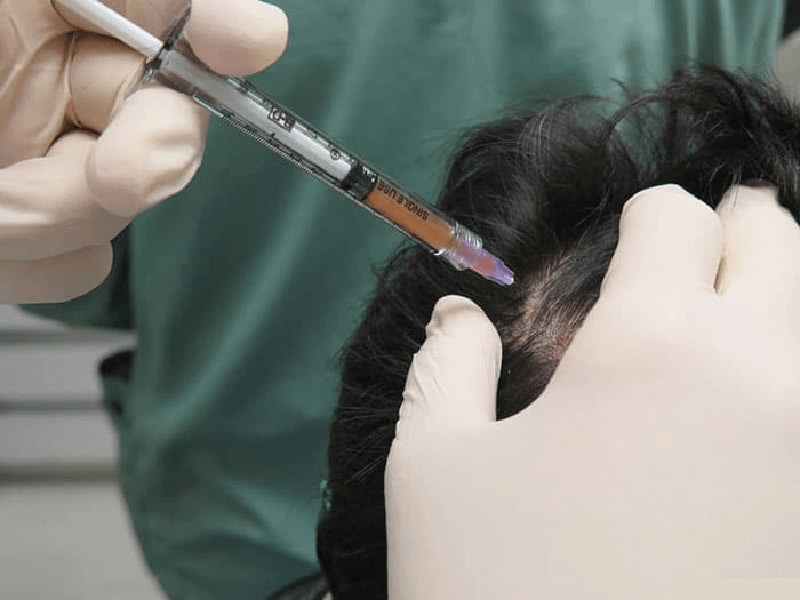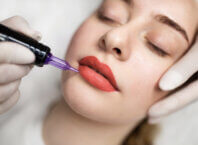Have you ever thought if it is possible to reverse hair loss through some natural means? Could PRP be a possible answer for your thinning hair troubles? What if you could simply use the healing powers of your body to restore your former glories?
If you’re looking into hair restoration options, you’ve probably heard of PRP (Platelet Rich Plasma) therapy. This advanced treatment has become pretty popular in the last decade and has offered hope to millions suffering from hair loss. But, PRP injection will not do it simply; you ought to know how to take care of the treatment for the best results at every step of the way.
In this guide, you will learn everything about how to ensure the best PRP hair restoration experience. We will discuss all the pre-treatment and long-term aftercare-protocols that can kick results from good to excellent. We will study the science of PRP, your best aftercare practice, and the impact of lifestyle in boosting results. We will also discuss how to combine PRP with other types of treatment and what would be some realistic expectations on your hair growth timeline.
What Goes Under PRP Hair Restoration?

The Science Behind PRP
PRP hair restoration might just sound like an idea lifted from a science-fiction storybook; yet, it is actually backed by solid medical science. PRP therapy is primarily about using one’s blood in inducing hair growth. The working process involves a blood draw; much like your blood tests with the ordinary laboratory. The blood is then placed in a centrifuge and is spun to separate different components.
The uniqueness about PRP is that its concentration of platelets is extremely high. The platelets are tiny blood cells that are said to be very rich in growth factors-these are proteins that serve as messengers instructing the body to repair and regenerate tissue. When the concentration of these platelets is raised to three to five times normal levels found in blood, this healing potion becomes quite potent. Think of it as a massively amplified version of the body’s natural repair mechanism.
PRP-The Reason for Treating Hair Loss
PRP appears effective at treating hair loss because it works on multiple mechanisms that lead to hair thinning. First, growth factors in PRP stimulate stem cells in the hair follicle environment. Stem cells are essential for hair regeneration and the healthy cycle of hair growth. With stem cells activated, PRP essentially primed those follicles that may have been resting.
Another important benefit includes blood circulation. Many hair loss conditions are characterized by blood under-delivery to the scalp, which implies a lack of nutrients and oxygen for the hair follicles. With PRP injections, therefore, a vascularization of the treated areas will take place, which will be the formation of new blood vessels, but will also stimulate existing blood vessels. Those nourished blood vessels with the improved blood flow will nourish the hair follicles and create a suitable environment for hair growth.
What To Expect From The PRP Treatment
Treatment Procedure Broken Down Into Steps
Most probably, it is because you have no idea what really happens during treatment that going to your PRP appointment is slightly nerve-wracking. The treatment usually starts with consultation, where the practitioner examines your scalp and asks questions about your goals. Pictures are also taken, to document the beginning, which would be very useful when tracking down your progress. The treatment would then begin, with a blood draw from the arm of about 20-60ml, depending on the area being treated.
Next comes the centrifugation stage, or the fun part. A laboratory investigator responsible for preparing the blood sample places it in a special machine that centrifuges the blood at extremely high speeds for about 10 to 15 minutes. During that time, the practitioner prepares the area on the scalp for injection, which may mean cleaning the area and perhaps applying a topical numbing cream. Some clinics prefer to perform dermaroller or microneedling in advance to cause some micro-channeling in the scalp that will enhance PRP absorption.
What Sensations Are Common During the Treatment?
Let’s be true about the sensations of PRP treatment. An overwhelming majority of patients say the initial blood draw felt like any other routine blood test-a quick pinch and it was over. The next step, preparing the scalp, is quite a comfortable stage, especially if numbing cream is used. Patients will feel coolness from the applied cream, followed by dissipation of sensation in the treatment area, feeling a little tingly or heavy.
Experiences during injections vary from one person to another. With optimal numbness, many patients report just a sensation of mild pressure or a slight prickling sensation for each injection. Some describe it similar to getting acupuncture or tiny pinpricks. This is a true fact about scalp sensitivity. Scalp is the least sensitive portion of our body where we have a possibility of good experience through the pain during such procedures. Any adverse feeling produced as a result of it happens to be transient and tolerable, according to most patients, considering them at around 2-4 on the 1-10 pain scale.
What You Expect after PRP Hair Treatment: For the initial 48 Hours
Important Things to Do and Don’t Do
Very critical in the first 48 hours after PRP treatment and extremely necessary in achieving optimal results. Consider using this as the time for the growth factors to settle and do their job without interference. Most importantly do not wash the hair for 24 hours or preferably 48 hours. This gives PRP time to be absorbed into the scalp tissues. When you shampoo, use lukewarm water, and be very gentle; vigorous scrubbing or massaging is a no-no.
Exercise is another important consideration. While activity generally keeps hairs healthy, you’d probably want to avoid strenuous workouts in the first two days. Heavy exercise increases blood pressure and sweating, both which would have an impact on the healing process. Some light walking is fine, but save the gym sessions and running for after 48 hours. In the same way, avoid activities that lead to excessive sweating, including saunas, steam rooms, and hot yoga.
Discomfort Control and Swelling
Normal and an actual sign that the body has begun responding to treatment, mild to moderate tenderness and swelling following PRP treatment will actually peak for the most part within 24 hours and gradually feeling like sunburn but mild will subside thereafter. You may find some tiny bumps on the areas treated with injection; do not worry, as they usually flatten out within one or two days.
The best friend in most of these cases is cold compression. You can wrap ice or a bag of peas in a soft cloth and place it as gently as possible against the tender area at intervals of ten to fifteen minutes at a time. Just take care that you do not place the ice directly in contact with your skin or use it for long periods of time. A number of patients tend to find very soothing the very cool damp cloth instead, as bringing all that in without the intensity of ice isn’t so bad. Rather, it is gentle, intermitent cold therapy-not long cold exposure.
Maximum Results after Best Care
Week 1-2: Key Care Guidelines to Follow
It is this two-week period after your PRP treatment that determines what ultimately results from this therapy. During this time, growth factors are actively being received by your scalp, and what you do during that time can promote this deposit considerably. In terms of hair washing, the simplest is: mild, sulphate-free shampoo-this is where an awareness on what is the best shampoo after PRP treatment comes in handy. This is specifically a shampoo for post-procedure or special treatment for sensitive scalps. Harsh chemicals, heavy fragrances, and exfoliating will not be in this formulation.
From now on, your hair and scalp care must be as simple as possible during those two weeks. No hair product shall be used, most especially, alcohol-based ones that can dehydrate your scalp. Heat-styling tools are banned-no hairdryer on a high temperature, straightener, or curling iron. If you must dry your hair then use the cool setting on your hairdryer and hold more than 6 inches from your scalp. This means getting to appreciate the natural texture of your hair for quite a while, but your follicles will thank you for it.
Month 1: Support Hair Growth
At the start of the first month after the procedure, you could probably start returning to your usual routine in terms of hair care. Remember, however, to listen to your scalp and keep it from feeling overwhelmed or disturbed. This month, you could probably include some mild scalp massages into your routine. By simply massaging the scalp a few times a day in circular motion for about five to ten minutes one can increase blood circulation and distribute the natural oils from scalp to hair, creating an optimal environment for future hair growth.
Now is the time to turn your habits into a regular hair regimen that supports growth. Continue with the very mild, moisturizing shampoos and perhaps a little bit of lighter air conditioner, if you really think you need it. Silk or satin pillowcases are a good option for some patients during this time: these materials cause lower friction than cotton when it comes into contact with hair, both breaking and dehydrating hair. Perhaps, switching to a wide-toothe comb or soft-bristled brush could also help reduce tension on your hair and scalp.
Combination of PRP with Other Hair Restoration Techniques

Complementary Treatments That Works
Purely PRP therapy itself works excellently; though enhancing the treatment with other services can hugely amplify results. Microneedling and PRP are one of the combinations that are most frequently advertised. Microneedling creates small channels through which PRP can be delivered into the scalp more effectively while stimulating further production of the body’s own collagen within the “scaffold” on the scalp as it heals. Many places such as clinics have offered this in applied practice, often dubbed as ‘vampire hair restoration’. They will act more quickly and better together.
Other medications include minoxidil (Regaine) and finasteride, which work along with PRP therapy. Minoxidil has increased blood supply to follicles and increased duration of the hair growth phase, complementing the action of PRP for growth factor stimulation. Finasteride is usually prescribed for male pattern baldness since it inhibits DHT production. Therefore, when combined with PRP injections, results are preserved and moreover augmented. For best results, always check with your doctor for safe combinations of treatments for your own condition.
Tying Treatment Schedules
Getting the timing right when combining treatments with one another is crucial for optimum results achieved. This means that if PRP is going to be implemented together with other procedures, the scheduling must be very careful, as then you may be sure that each treatment can adequately do its function without detracting from the others. Very often, this goes on with microneedling and PRP, as both are done in one go. If these are being done separately, however, wait at least two weeks between treatments, allowing your scalp to heal.
Regarding treatments with topical medications such as minoxidil, patients can usually start taking these medicines wholly after clear of any tenderness from the injection points and once they feel normal again. Oral medications such as finasteride or other supplements may continue use without any interruption even during the duration of PRP treatment course. Keeping the consistency with these kinds of supportive treatments will create a perfect environment for the PRP process.
Your Journey Towards Fuller, Healthier Hair
In this guide, we’ve seen how proper PRP Injections For Hair Restoration involves a multi-faceted strategy that goes well beyond simply showing up in a doctor’s office. Good preparation and aftercare, lifestyle choices, and realistic expectations all add up to the success factor in this research. However, PRP therapy is not so much that it stimulates hair growth easily; it harmonizes very well with one’s body’s natural healing processes.







